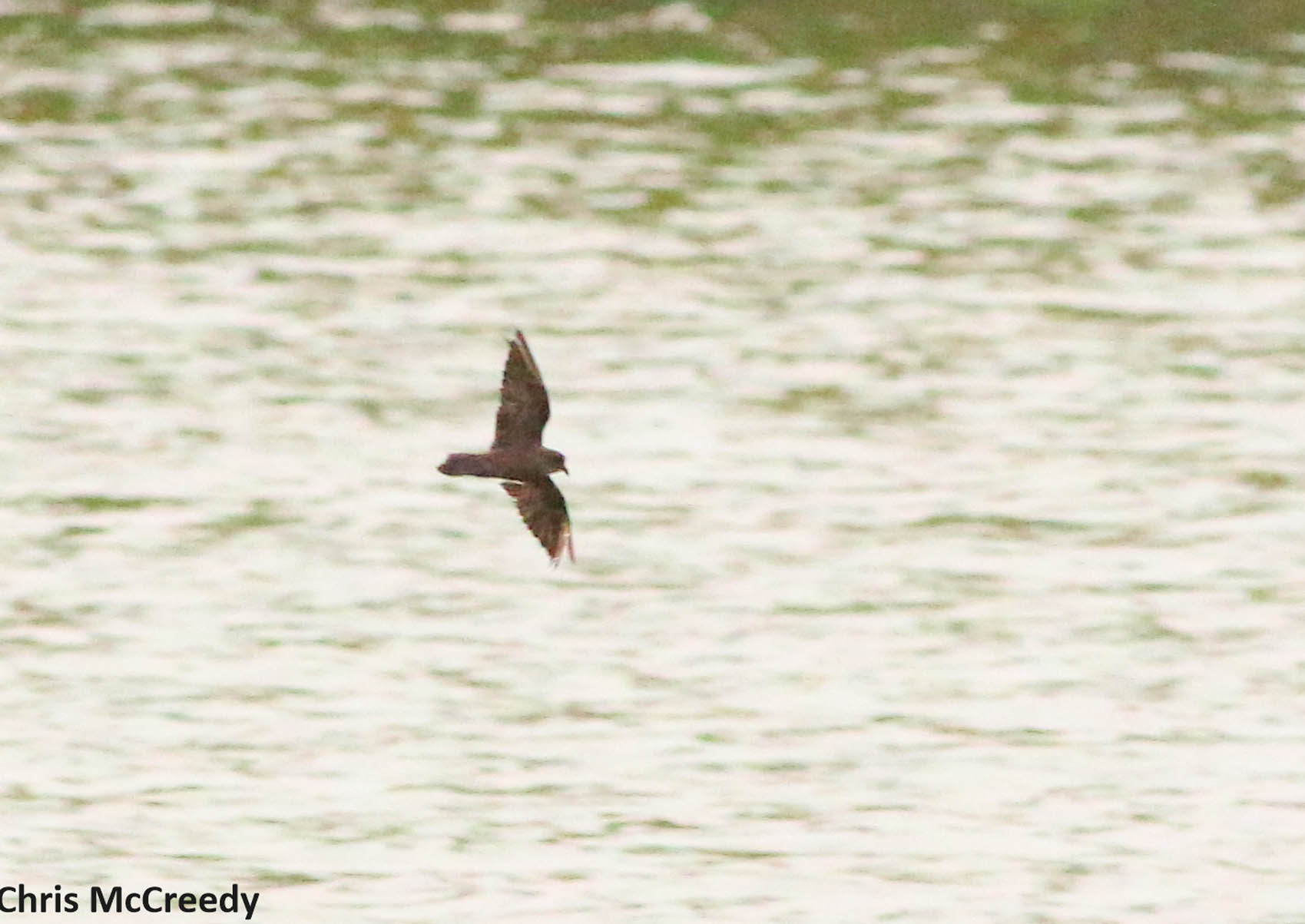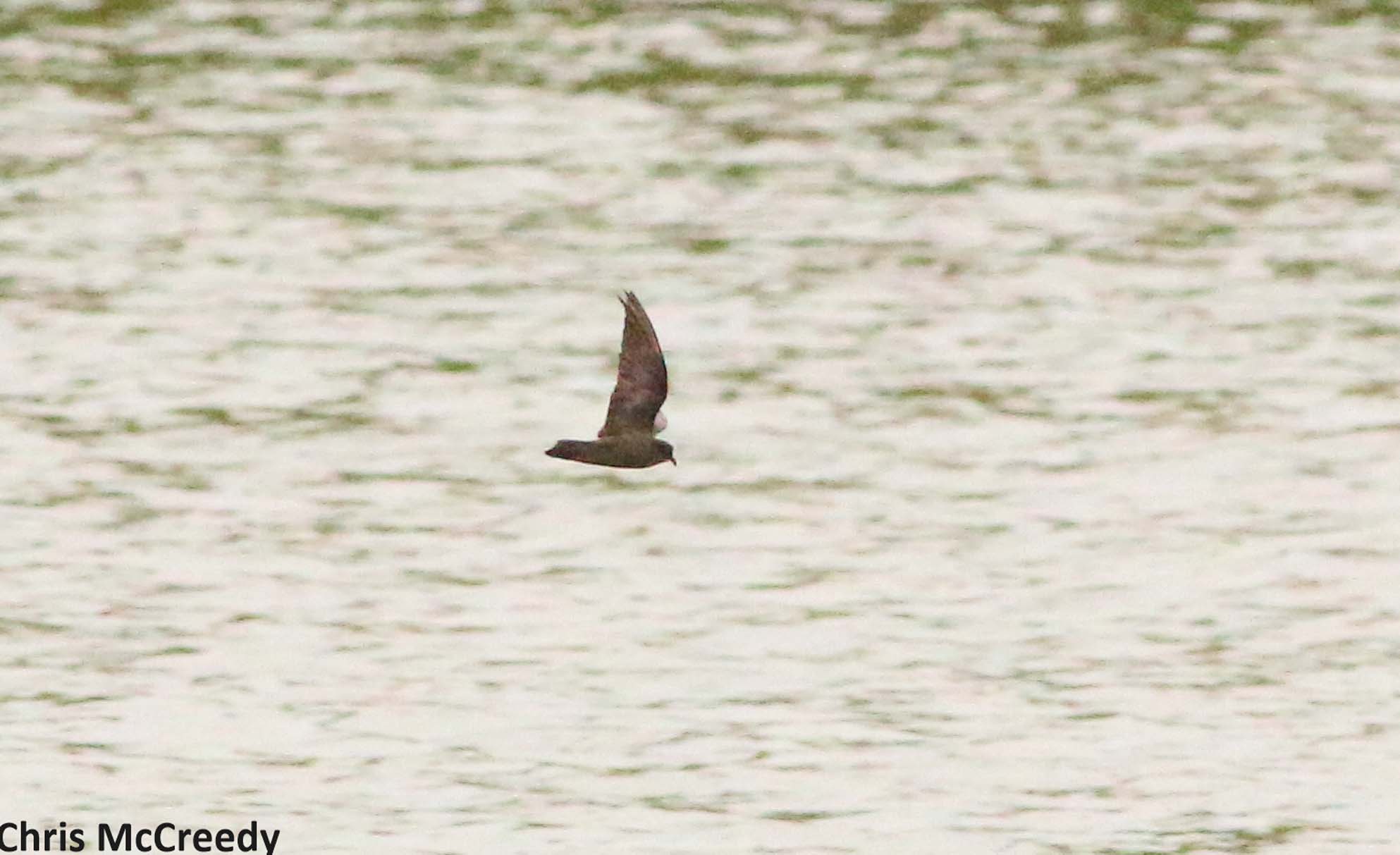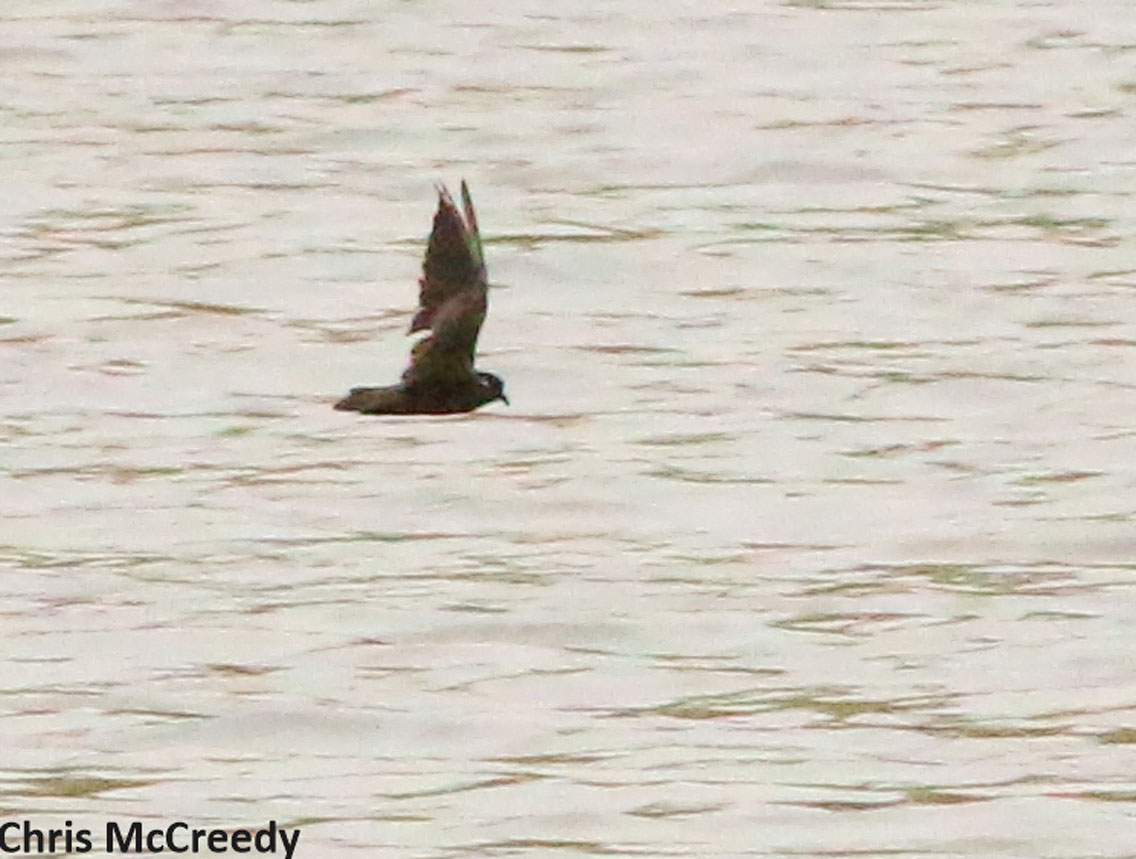 |
 |
|||||||||||||||||||||
|
||||||||||||||||||||||
Least Storm-Petrel (Oceanodroma microsoma), Patagonia Lake, Santa Cruz County
This Least Storm-Petrel was
found and photographed by Chris McCreedy on 07 September 2016
Hurricane Newton formed roughly 220 mi southwest of Manzanillo, Colima, Mexico on 4 Sep 2016 and reached Arizona on 7 Sep 2016, bringing with it several notable species, including three species new to Arizona and one even new to the ABA area! This storm officially reached hurricane strength winds late on 5 Sep 2016 and reached peak intensity with wind speeds of 90 mph shortly before making landfall at Cabo San Lucas, Baja California Sur. Newton moved north and weakened over the Baja California Peninsula. The eyewall fell apart before it made a second landfall, after crossing the Gulf of California, near Bahia Kino, Sonora where it weakened to tropical storm status. Early afternoon on 7 Sep it crossed into Arizona in a weakened state. Despite the weakened state of the storm it managed to bring 5 species of “tubenoses” to Arizona, typically associated with stronger storms. Clearly we have a lot to learn about how hurricanes affect birds in our area! To see a track of the storm see here and to see windspeeds see here. For more information on the last tropical storm to bring tubenoses to Arizona, Nora, see here.
Multiple Least Storm-Petrels (5+) were reported during the hurricane and this individual represents the second county record for Santa Cruz County. The species is common around Baja California and in the Gulf of California. It has previously been brought to the interior southwest after tropical storms including the three prior records in Arizona. Two records are from the LCRV: two at Davis Dam after Kathleen (1976) which brought thousands of Least Storm-Petrels to the Salton Sea, California and 100+ on Lake Havasu after Nora (1997), as well as one prior southeast Arizona record at Patagonia Lake after Lester (1992). The Salton Sea has one summer record that is not related to any tropical storm.
Small storm-petrel, note small "tubenose" on bill.
Small size (compare with the Wedge-rumped Storm-Petrel
in the 3rd photo), all dark plumage, long graduated, wedge
shape tail not in molt identify this species versus all
other storm-petrels. Of interest all of the Least
Storm-Petrels photographed have been in primary molt
(compare with the Wedge-rumped Storm-Petrels)




07 September 2016, photo by Chris McCreedy
All photos are copyrighted© by photographerSubmitted on 02 October 2016
|
©2005
|
HOME | | | REPORT SIGHTINGS | | | PHOTOS | | | BIRDING | | | JOURNAL | | | ABOUT US | | | CHECKLISTS | | | AZ BIRD COMMITTEE | | | EVENTS | | | LINKS |